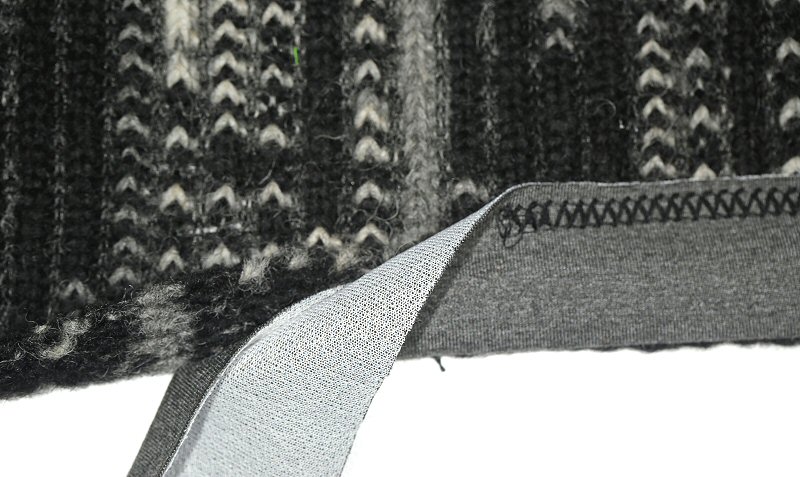
by Kathryn Brenne

A bit of fusible interfacing applied to the hem allowance can help to control hems, prevent stretching and make them easier to stitch. Cut crosswise strips of interfacing the width of the hem allowance. Fuse the strips to the hem allowance before turning up the hem.

double fold hem on lighter sweater knit
Lightweight, drapey knits require a bit of weight to hold hems in place. When planning the cutting of your garment allow for a double fold on the hem allowance. Fuse interfacing to the edge of the garment. Fold the hem allowance over twice. Stitch in place using a slight zig zag with a stitch width of .5mm and a stitch length of 2.5mm.
A twin needle can duplicate ready to wear cover stitched hems. Press the hem in place, reinforcing with a strip of interfacing if necessary. Stitch using a twin needle, two spools of thread and a straight stitch setting with a stitch length of 3mm. Trim away excess hem allowance close to stitching.

twin needle application - front

twin needle application - back

cover stitch, wooly nylon in looper - wrong side
If you own a cover stitch machine, a cover stitched hem is perfect for sweater knits. Fold up the hem allowance, increase the differential feed and use a stitch length of 3 or longer depending the thickness of the sweater knit. Usually the differential feed will help the fabric to feed evenly but if the hem is difficult to handle, apply a strip of fusible interfacing to the hem allowance.

faced hem using rayon jersey
If bulky sweater knits are too thick when folded back on themselves try making a faced hem using rayon jersey. Cut the jersey 1 3/4" wide on the crosswise grain. Interface the jersey with lightweight tricot knit interfacing to prevent the edges from curling. Attach the facing to the lower edge of the garment with a 5/8" seam allowance. Press the seam flat, open and then to the inside. The seam allowance can be trimmed if it is bulky. Cover stitch or use a twin needle to sew the hem allowance in place.

